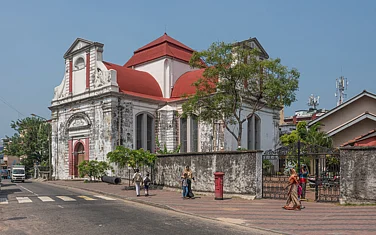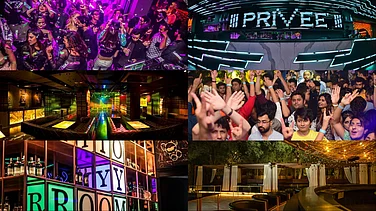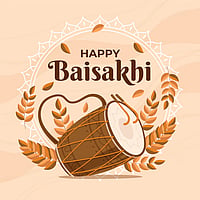Most people often picture colors being thrown at each other and water fights when they hear about Holi, India's famous festival. But in South India, Holi offers a different experience, unlike the northern part of India. Here, the focus is more on having a calmer atmosphere while being spiritually connected with God. Let's travel south to explore how Holi is celebrated in Tamil Nadu, Karnataka, Andhra Pradesh, and Kerala.
Focus on Rituals
Instead of the usual color fights you might often see in North India, South India celebrates Holi in a much different way. The emphasis here is more on following religious traditions and asking for good things to happen in the coming year. People pray and take part in special rituals at the temples.
During Holi, bonfires hold great significance. They symbolize the cleansing of the past year's negativity. The smoke released carries away all negative energy, creating space for new and positive experiences. In South India, Holi reflects the cyclical nature of life, like the changing seasons. It's a time to shed the burdens of the past, comparable to a harsh winter, and embrace fresh opportunities and a renewed spirit, akin to the arrival of spring.
Kaman Pandigai in Tamil Nadu
In Tamil Nadu, the festival of Holi is known as Kaman Pandigai. It celebrates love, particularly the tale of Kama Deva, the Love God. According to the story, after the passing of his wife Sati, Lord Shiva became detached. To get his love, Parvati needed assistance to break his meditation. The gods chose Kama Deva, who shot Shiva with a love arrow, awakening him and restoring his affection for Parvati.
Shiva, angered by Kama Deva's interference, incinerated him. Kama Deva's wife, Rati, pleads with Shiva to restore Kama Deva, but not right away. Kaman Pandigai celebrates this tale and love's might. Before the full moon, an image of Kama Deva and Rati is created and adored. A banner representing love is raised, and people gather to praise love's power with music. On the day of the full moon, the banner is ritually burned, symbolizing Kama Deva's love and sacrifice. It stands for Kama Deva's temporary sacrifice, with the belief that Shiva revives him during Holi.
Kamana Habba in Karnataka
Holi is portrayed differently in Karnataka where it is referred to as the Kamana Habba or Kama-Dahanam festival. Here, the focus shifts from love (like Tamil Nadu) to a deeper concept: balance. Rudra devaru, an incarnation powerful of Lord Shiva has been the center of Kamana Habba which tells about Manmatha, the god of desires being burnt. It does not just represent the prioritization of spiritual practices above the worldly ones.
Kamana Habba translates to "festival of desires." The word depicts our longing for pleasure and fulfillment, while at the same time, it puts forward the idea of balance. The aim is not only limited to personal fulfillment but also collective happiness for society and the world, in general. So, during Kamana Habba, people don't just celebrate desires, they also participate in rituals and prayers, seeking a balance between worldly pursuits and spiritual growth.
Meduru Holi in Andhra Pradesh
Andhra Pradesh offers Meduru Holi, a vibrant celebration marking the victory of good over evil and the arrival of spring. Processions filled with music and dance through the streets, with participants playfully throwing colored powders at each other. Devotional songs dedicated to Lord Krishna add a spiritual dimension to the festivities. The Banjara tribes further enrich the celebration with their unique and graceful dances, showcasing the region's rich culture.
Manjal Kuli in Kerala
The Indian state of Kerala has its own version of the Holi festival by the name of Manjal Kuli festival. Mainly observed along the coast of the town of Guruvayur. Instead of the colored powders, the participants shower each other with a mixture of turmeric paste and water, signifying prosperity and fertility. Traditional music, dance, and feasting accompany the festivities, creating a very jovial atmosphere. It's important to note that Holi isn't a widespread festival in Kerala, mainly observed by younger generations and specific communities.
Holi unfolds in fascinating ways across South India. Every place presents you with a humbling experience of the diverse culture of the festival. Holi in southern India is a fascinating blend of traditions. Every place has its own particular way of doing it. Tamil Nadu has love as its theme, Karnataka has to be good as its theme, and Andhra Pradesh has itself as a colorful spring. Though Kerala also has a special way to celebrate with blessings. Through these various celebrations, we discover the meanings of Holi and how it unites people.


























